Detection and repair of pipeline leaks are critical functions of piping system operation due to the increasing water scarcity and degradation. With the increasing use of plastic pipelines in urban networks, there is an urgent demand for developing leak noise transducers to locate pipeline leakage accurately on a cost-effective basis.
Currently available leak noise transducers, namely accelerometers and hydrophones, are designed and manufactured based on the piezoelectric effect. The Polyvinylidene Fluoride (PVDF) film has been widely used in transducer manufacturing techniques due to its strong piezoelectric effect.
Researchers from the Institute of Acoustics of the Chinese Academy of Sciences (IACAS) developed the PVDF wire sensors for leakage localization in fluid-filled pipes.
The wire sensor has the form of self-shielded coaxial design, allowing its use in a high Electromagnetic interference environment, as shown in Figure 1. In order to monitor the internal acoustic pressure, the PVDF wire was installed by wrapping around the pipe wall to secure the strong connection between the wire sensor and the pipe wall. Researchers derived its theoretical pressure sensitivity, which was governed by the winding installation form and numbers.
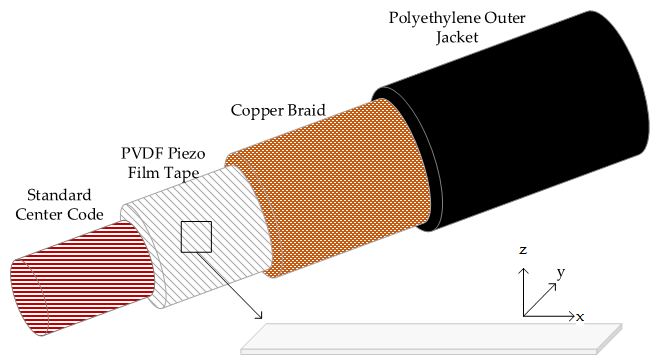 .
.
Figure 1. Schematic design of the PVDF wire sensor. (Image by IACAS)
Researchers carried out leak noise measurements in a water-filled pipe, in order to verify the predicted pressure sensitivity and the performance of leakage localization. Figure 2 showed the time-domain and frequency-domain leak noise signals collected by the proposed wire sensors at the same position with 2, 4, and 6 winding numbers. As can be seen from the figure, higher sensitivities were obtained by adopting more winding numbers, which is consistent with theoretical predictions.
Frequency analysis was performed on the leak noise signals measured by a pair of wire sensors and a B&K 8103 hydrophone pair installed either side of the leak position. Good comparisons between the two types of leak noise sensors were demonstrated at low frequencies below 1 kHz. Further calculation of the phase spectrum led to the leak position with the error less than 2%.
(a) (b)
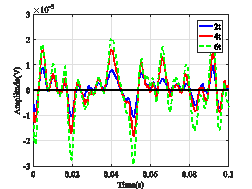
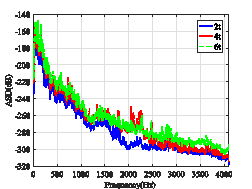
Figure 1 Leak noise signals measured by the PVDF wire sensors: (a) time domain; (b) frequency domain. (Image by IACAS)
(a) (b)
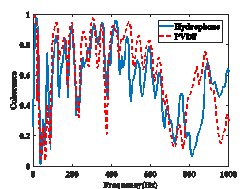
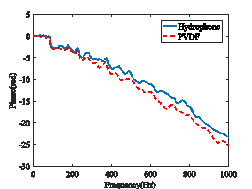
Figure 2 Comparison of the frequency results measured by the PVDF wire sensors and hydrophones: (a) coherence; (b) phase spectrum. (Image by IACAS)
The proposed wire sensor may offer an alternative to leak noise transducers in plastic pipes due to its easy employment, low cost and turned sensitivity.
The research was supported by the National Natural Science Foundation of China (No.11774378).
The research was recently published online in Sensors.
References:
SUN Pingling, GAO Yan , JIN Boao, Michael J. Brennan. Use of PVDF Wire Sensors for Leakage Localization in a Fluid-Filled Pipe. Sensors 2020, 20, 692. DOI: 10.3390/s20030692
Contact:
ZHOU Wenjia
Institute of Acoustics, Chinese Academy of Sciences, 100190 Beijing, China
E-mail: media@mail.ioa.ac.cn


